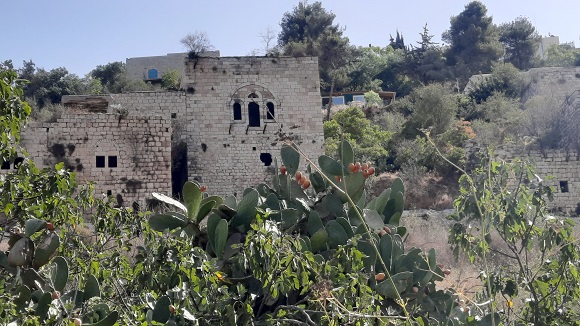A hike through the abandoned
Palestinian village showed me not much has changed since I graduated from high
school there nearly 50 years ago.
The Jerusalem Experimental HighSchool had its first permanent facility in a renovated abandoned house in Lifta on the outskirts of Jerusalem and I studied there for two years in the 1970s.
The school later relocated to the center of Jerusalem, but my memories of
walking along a scenic path through Lifta on my way to classes are still
crystal clear.
 |
| My high school was in this building |
According to media reports, Jerusalem
Mayor Moshe Lion wants to preserve the village and turn it into a World
Heritage Site. It is not clear to me, what that would mean.
A misleading statement issued by the
Jerusalem Municipality states that the "village dates back to the days of
the Second Temple and continued to exist in various ways until the War of
Independence."
Following the war, Israel settled
hundreds of immigrants from Yemen and Kurdistan in Lifta, but because of the
poor conditions, including lack of electricity and other infrastructure, they were
asked to leave and compensated, and holes were drilled in the roofs of their
homes to discourage squatters.
One of the buildings was used in 1984
as the base of the so-called "Lifta Gang", a Jewish terrorist group
that plotted to blow up the mosques on the Temple Mount. Gang members were stopped
at the last minute with 250 pounds of explosives, hand grenades, and other weapons.
The school where I studied became a drug
abuse rehabilitation center for adolescents, but this shut down in 2014.
 |
| Inside one of the abandoned buildings in Lifta |
Today, the village is part of the Mei
Neftoach nature reserve, and efforts are being made to improve access to the
spring at its center. The village attracts ultra-Orthodox youths from the
nearby Romema neighborhood, wayward youths seeking solitude, and Jerusalem's
Arab residents looking for ways to reconnect with their national heritage.
 |
| Mei Neftoach spring |
In the meantime, Lifta is a unique
and colorful hiking destination in Jerusalem. Walking along its pathways and
peering into its collapsed homes is a step into the past, an exploration that raises
questions about the village's future.



